Spy Camera Detector History
updated 1/22/2024
How can I find hidden cameras?
(Click above to learn about spycam detection training.)
How do spy cameras work?
Along with, “Which is the best?” These are questions I hear often.
Spy Camera Detector History
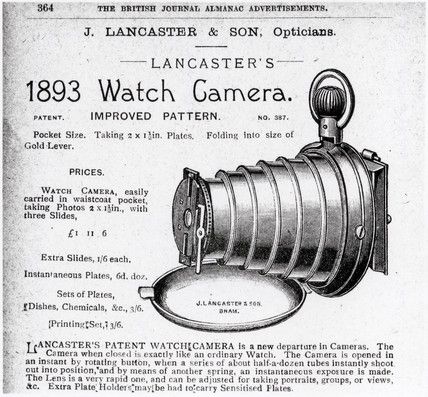
Early Covert Spy Camera
Covert cameras have been around since the 1800’s. Interestingly, as soon as photography developed, people wanted to surreptitiously take photos. From voyeurs to private eyes, a spycam was the gadget to have. In 1900, movie maker, George Albert Smith, glamorized optical voyeurism in his movie, As Seen Through a Telescope. We will take a historical shortcut here and leave the discovery of these early film spy cameras to auctioneers and collectors.
Our spy camera detection history begins with the advent of CCD and CMOS behind the lens. These are the electronic sensors within modern digital spy cameras which capture images. With a little knowledge—aided by some inexpensive gadgets—you can detect them!
Modern Spy Cameras Discovery Methods
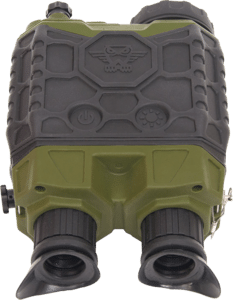 Scintillation
Scintillation
This type of spy camera detector shines a laser light on the CCD and CMOS material behind the lens and it scintillates. Government-level and high-end $$$$ detectors use laser light to create this scintillation. It is this generated light that gives away a hidden camera’s location.
Dr. Gordon Mitchell Ph.D., CPP, pioneered early experiments with laser scintillation for TSCM inspections in 1995. It seemed like a curious breakthrough with limited application back then.
He described one of his favorite spy camera detection techniques for me…

Lens Retroreflection Diagram
“Use a small intense flashlight to illuminate suspect items. Looking right along the edge of the flashlight, a glint will be seen from the lens, often it is green. Move the flashlight an inch or so from your line of sight and the glint will go away. Works better than the blinkies which are tricked by doorknobs, etc. Here is a graphic illustrating why cameras act like retroreflectors for objects in their field of view. All rays that hit the sensor (film or a semiconductor sensor array) and go back toward the lens are directed exactly back to the flashlight (and your eye). One can easily check this out by propping a cellphone up across the room. For cell phones with more than one camera, the reflections will behave differently. It is necessary to be within the field of view of the camera to see the glint.”
A 1971 scientific paper which explores laser retroreflection is detail can be found here.
The Worldwide Spy Camera Pandemic
Today’s spy camera craze makes hidden camera detection a daily necessity now. In South Korea the problem is so rampant there were several public street protests. The government responded by performing public toilet inspections.
The average individual in other countries can’t count on a government response like South Korea’s. They have to rely on themselves for protection by detection. Due to the high cost of professional spycam detection devices, one has to count on a slightly different, and less expensive, detection technique–red blinky LEDs. This technique sort of works, some of the time. Blinky lights highlight reflective surfaces, like glass and plastic lenses.
Before You Buy Any Spy Camera Detector
Buying a blinky-light may seem like your first step. It isn’t. You need to know what to look for, and where to look, first. Spy cameras detectors rarely come with detailed instructions. They are just helpful tools. Like any tool, they are not very helpful if you don’t have the skills to use one. Not knowing what spycams are out there, and where they hide, is dangerous. An uneducated inspection creates a false sense of security. You don’t want that. Invest in a quick, on-line, video education first. Step Number One is educating yourself.

Spy Camera’s Lens Reflects
Blinky-Lights
Detection using red blinky-lights is more labor intensive than laser based systems. Why? Because lots of things reflect light. Aside from seeing a galaxy of false positives, searching can also become fatiguing very quickly (eye strain), especially if more than a simple bathroom is being inspected.
Even with these limitations hidden camera detection inspections using the blinking light technique can be surprisingly successful.
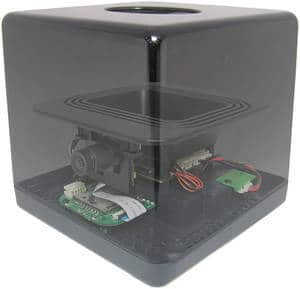
Black Plastic Tissue Dispenser Spy Camera
Note: The blinking light technique does not work if the spy camera is hidden within a black plastic enclosure, like a tissue dispenser. An example of this is your TV remote. Its internal LEDs tell your TV what to do by blinking instruction using infrared light. You don’t see this because they are infrared light pulses, and you don’t see the LEDs because they are covered by black plastic at the end of the remote controller. An infrared flashlight and viewer is what you need to see through black plastic spy camera enclosures, or the LEDs in your TV remote control.
Types of Spy Cameras
Knowing the different types of covert spy cameras will help you find them, and catch the culprit. For example, if the device is battery powered, or requires an SD card, chances are good the person will eventually return to retrieve the device,change the batteries, or swap it out with a fresh device. These are the broad categories of spy cameras currently being sold…
- Images internally stored, battery powered. (Typically pens, key fobs, cell phones, clothing hooks, and bathroom items. May use motion or sound detection to conserve battery power.)
- Images internally stored, continuously powered. (Typically found in lamp fixtures (and flood lamps), radios, clocks, USB chargers, or anything mains powered, including the outlets themselves.)
- Images transmitted wirelessly, battery powered. (Typically small black boxes, drones and cell phones. Short transmission time unless the device is left plugged into their charger.)
- Images transmitted wirelessly, continuously powered. (Typically lamp fixtures, radios, clocks, USB chargers. Unlimited transmission time, usually Wi-Fi, occasionally we still find older models transmitting via analog modulation.)
- Images transmitted via cable (Typically this type of spy camera is always on. It may be hidden in any type of enclosure, or behind a pinhole in the ceiling or wall. It may connect directly to a display screen, a recorder, a remotely-located transmitter, or the internet.
Selecting a Spy Camera Detector
Marketplaces like Amazon and Alibaba are littered with blinky-light hidden camera detectors for sale. Prices range from lunch money to hundreds of dollars. Picking one for personal use can be confusing. Separating the detectors into categories, with an explanation of their capabilities, will help…
-
- The One Trick Ponies — They just blink. You look through a colored piece of plastic to look for the light reflecting back to your eye. The plastic will match the color of the LEDs to filter out other wavelengths of light. The most popular color is red, perhaps to give a “laser” feel to the experience. These are the best choice for the average consumer. Watch this video to see one being used. One Trick Ponies are also available as smartphone apps for iOS and Android devices. The reviews seem mixed. Our tests were mixed as well.
- The Me-Too Devices — In addition to blinky lights, me-too devices add other spybusting capabilities. Depending upon the device, these added extras, like radio-frequency detection, may be helpful. Examples include: Determining if the camera is transmitting the image elsewhere; detecting certain (but not all) voice only transmitters (if they are currently transmitting); and magnetic field detection for finding GPS trackers adhered to a vehicle with a magnet. These are not professional level pieces of equipment, and don’t come with a professional TSCM technician. The added features are of dubious value in most circumstances, as they can also provide two unintended outcomes.
 1. Confusion, due to false positives.
1. Confusion, due to false positives.
2. A false sense of security, which is worse than a healthy sense of caution. - The We-See TV Devices — Some spy camera detectors focus on letting you see what the camera sees. “Hey, this sounds easy,” I hear you say. Don’t be fooled. It’s old tech aimed at analog modulation transmitters (AM & FM). These days hidden cameras are generally Wi-Fi enabled for direct or internet distribution of their signals. The Me-Too type devices might detect video transmitter signals, but these We-See video receivers won’t see as they can’t decode Wi-Fi and Bluetooth transmissions.
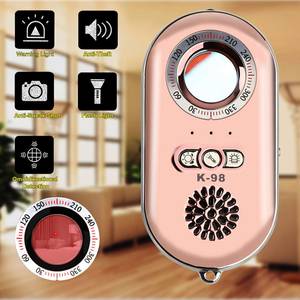
A Me-Too Type Detector
Beware of inflated sales claims in the ads. There are no “totally” effective do-it-all spy detection gadgets. And, some claims like this one are even incomprehensible: “Cameras which uses optical cameras are not detectable. Whether you are in unfamiliar places that are susceptible to snooping such as hotel room, change room or a toilet room. Imagine the comfort of having a handy tool to ensure your safety.” (What!?!?)
Situational awareness, knowledge about spy cameras, and the right spy camera detector will allow you to conduct a good, quick search for covert video devices.
Shop Carefully
Let’s say you decided on buying the One-Trick Pony type of spy camera detector. Prices for the same unit can be wildly different. Sometimes, I’m not sure who to fear most… the video voyeurs, or the people selling these detectors.
 Amazon Spy Finder Pro $129.00
Amazon Spy Finder Pro $129.00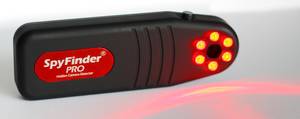 Amazon Spy Finder Pro $149.00
Amazon Spy Finder Pro $149.00 Ebay Spy Finder Pro $148.00-$228.46
Ebay Spy Finder Pro $148.00-$228.46 Amazon Mic-Lock Hidden Camera Detector $40.00
Amazon Mic-Lock Hidden Camera Detector $40.00
You’re a savvy shopper. You know spy camera detectors are nothing more than a battery, LEDs, a red piece of plastic encased in a black piece of plastic. They all blink. They all serve the same purpose. “Hummmm, which one should I choose?”

My prize for helping you out.
Need a hint? Remember what I said about eyestrain. A large viewing area is easy on the eyes. Now go shopping, and if I saved you any money, send me a couple of packs of M&Ms for my money saving tip.
You Found a Hidden Camera… Now What?
When you find a covert spy camera you have a few choices about how to handle it, depending upon the location.
Spycams in Expectation of Privacy Areas (restroom, changing areas, gyms, shower areas, etc.)
- Document your find. Take pictures with your cell phone.
- Call the police. Ask for a detective with electronic forensics experience to come to your location.
- Do not touch the device or leave it unattended. (Hey, you’ve just established a crime scene!)
- Once your statement has been taken by the detective, talk to an attorney. If you have been filmed, you have been damaged.
Spycams in Private Residences
You can follow the steps above, that’s fine. But, you won’t have the same legal recourse as you do against a business or other organization. Resolving these cases require a perp in custody.
You are dealing with a pervert. Perverts don’t give up when their covert cameras are found. They do it again and get sneakier each time. The only way to stop them is to stomp on their toes, legally. You need to collect evidence, but only if it is safe for you to do so.
Actual spy camera detection is just the first step. If you have a suspect in mind, keep a log of their actions. Suspicious movements, especially if repeated, contribute to your circumstantial evidence.
Example: Repeatedly visiting a bathroom just before or after it is used by potential victims. Too many visits by a landlord raises a red flag as well. If possible, jot down where your suspect keeps their computer, phone, and storage media (USB sticks, external drives, cloud storage, etc.). Knowing password and cloud account information is very helpful once the police are called.
If you control the space, you have a chance of documenting them in the act. Consider setting up your own covert camera to see who comes to service their device while you are away. While this can be a do-it-yourself job, I would recommend hiring a private investigator to assist. They have the equipment and know-how, and likely know the right attorney to recommend to you when the time comes. They can also act as your expert witness if it comes to that. Either route you choose…
- Do not record audio if you are unsure about your local laws. Even the least restrictive U.S. law requires that at least one person being recorded has consented to their audio being recorded. Some state laws are even more restrictive.
- Do not place your camera where it views expectation-of-privacy areas (bathroom interiors, showers, etc.). You just want to show who goes in there and when. Two wrongs don’t make a right, as a judge would say.
Once you have enough evidence documented, contact an attorney for assistance going forward.
FutureWatch – Detection using Smartphone Time-of-Flight Sensors
via theregister.com
“Sriram Sami, Bangjie Sun, and Sean Rui Xiang Tan, from National University of Singapore, and Jun Han from Yonsei University, describe how this might be done in a paper [PDF] titled “LAPD: Hidden Spy Camera Detection using Smartphone Time-of-Flight Sensors“… smartphones are commonplace these days, so adding an app like LAPD is likely to be more convenient than carrying a dedicated bug or signal detector at all times. LAPD’s goal is to be accessible, usable, and accurate, and to judge by the results reported in the paper, it hits those marks…”The ‘attackers’ have all the power to place hidden cameras anywhere, and the public is, in contrast, generally defenseless,” he explained. “That’s why we’re doing this work, and why we hope hidden camera detection can become more commonplace.” Sami said he intends to release the source code for LAPD but has to coordinate that with his colleagues.”
###
Murray Associates is an independent security consulting firm, providing eavesdropping detection and counterespionage services to business, government and at-risk individuals.
Headquartered in the New York metropolitan area, a Murray Associates team can assist you quickly, anywhere in the United States, and internationally.
EXTRAS:
• More security tips, spy and privacy news at spybusters.blogspot.com. Be sure to sign up for the free email updates.
• Concerned about Spy Cameras? Learn how to detect them.
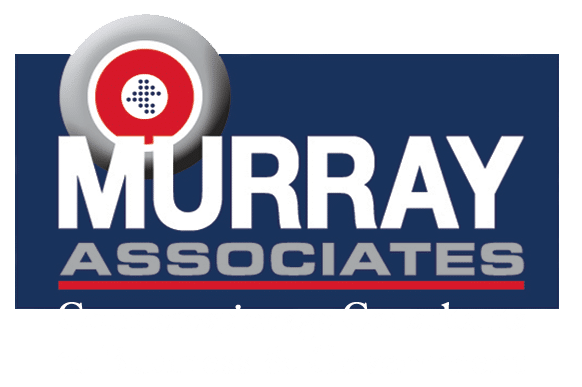
 1. Confusion, due to false positives.
1. Confusion, due to false positives.


Articles laid out for the layman are why I have Murray Associates bookmarked. Kevin’s posture toward folks like me is the reason I continue my relationship with him. This industry, having so very few long time experienced individuals, tends to hold ‘secrets’ like these close to their chests which, in my layman’s experience and opinion, do more harm than good for so many like me and we end up purchasing “Antispy” devices – created and manufactured for pennies – costing folks like me hundreds to thousands of dollars over our lifetimes while returning lilttle to no value, giving us a false sense of security (also hit on by Kevin in the above article) yet providing massive profits for ill-meaning players in this exponentially, ever expanding, very profitable business that by and large tends to keep folks like me investing in these gadgets while doing very little to educate uninformed people like me and siphoning our income when it could be put to use elsewhere more productively. Operating at this level is why Kevin has my unending appreciation for, and dedication to him and Murray Associates. Thank you, Kevin.
Great practical and useful information. Thank you!
An excellent and well researched piece. Thanks Kevin!